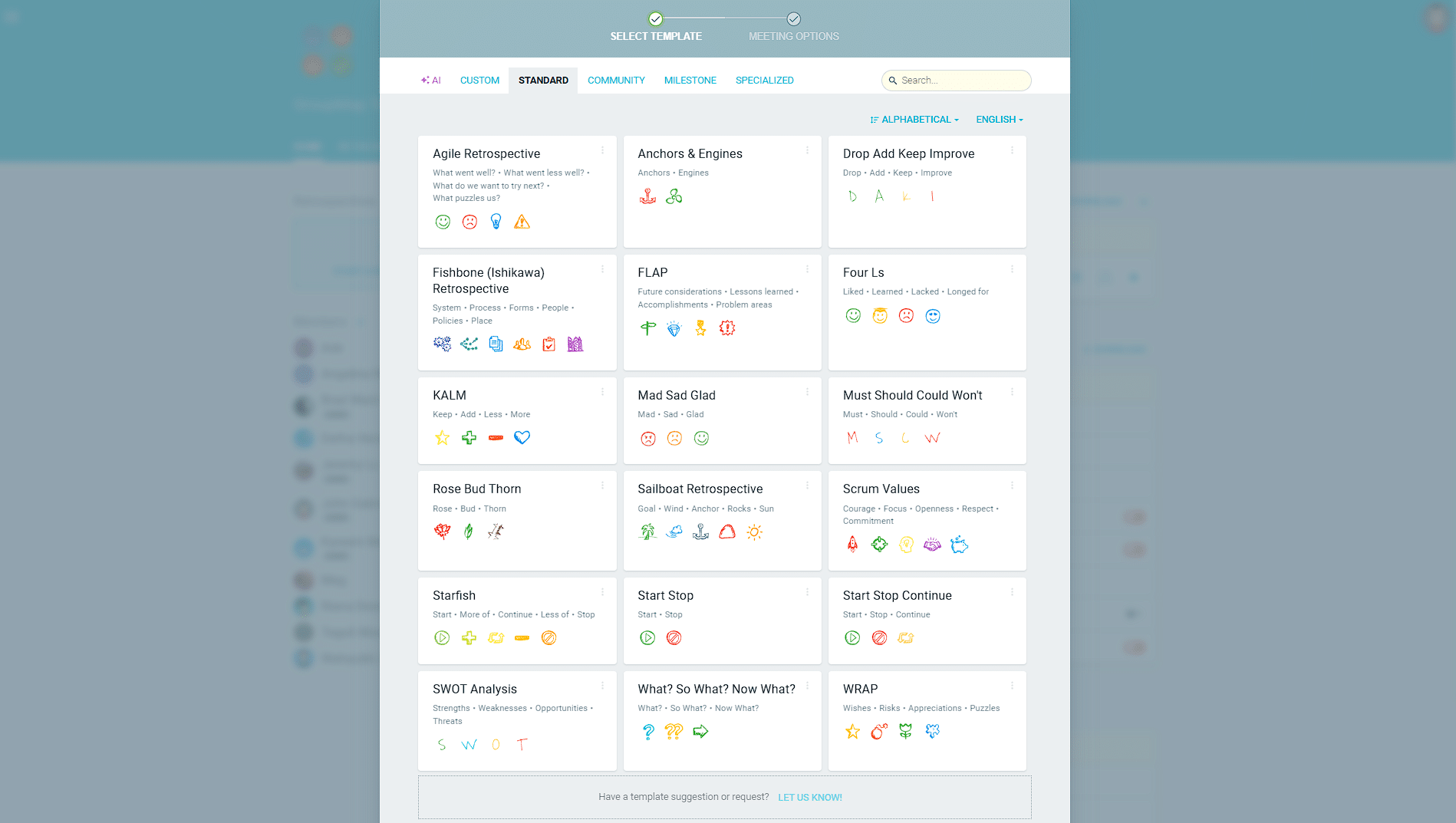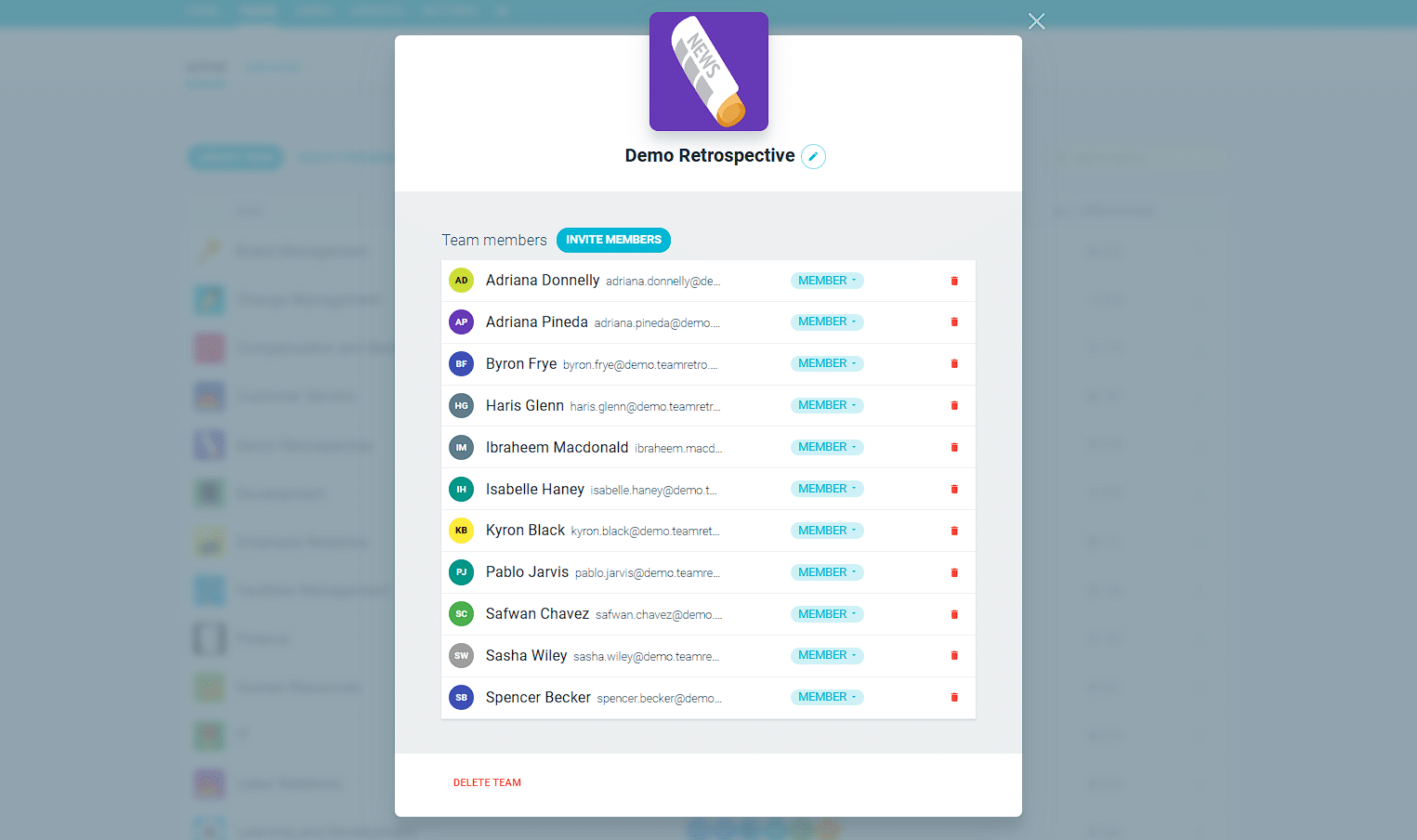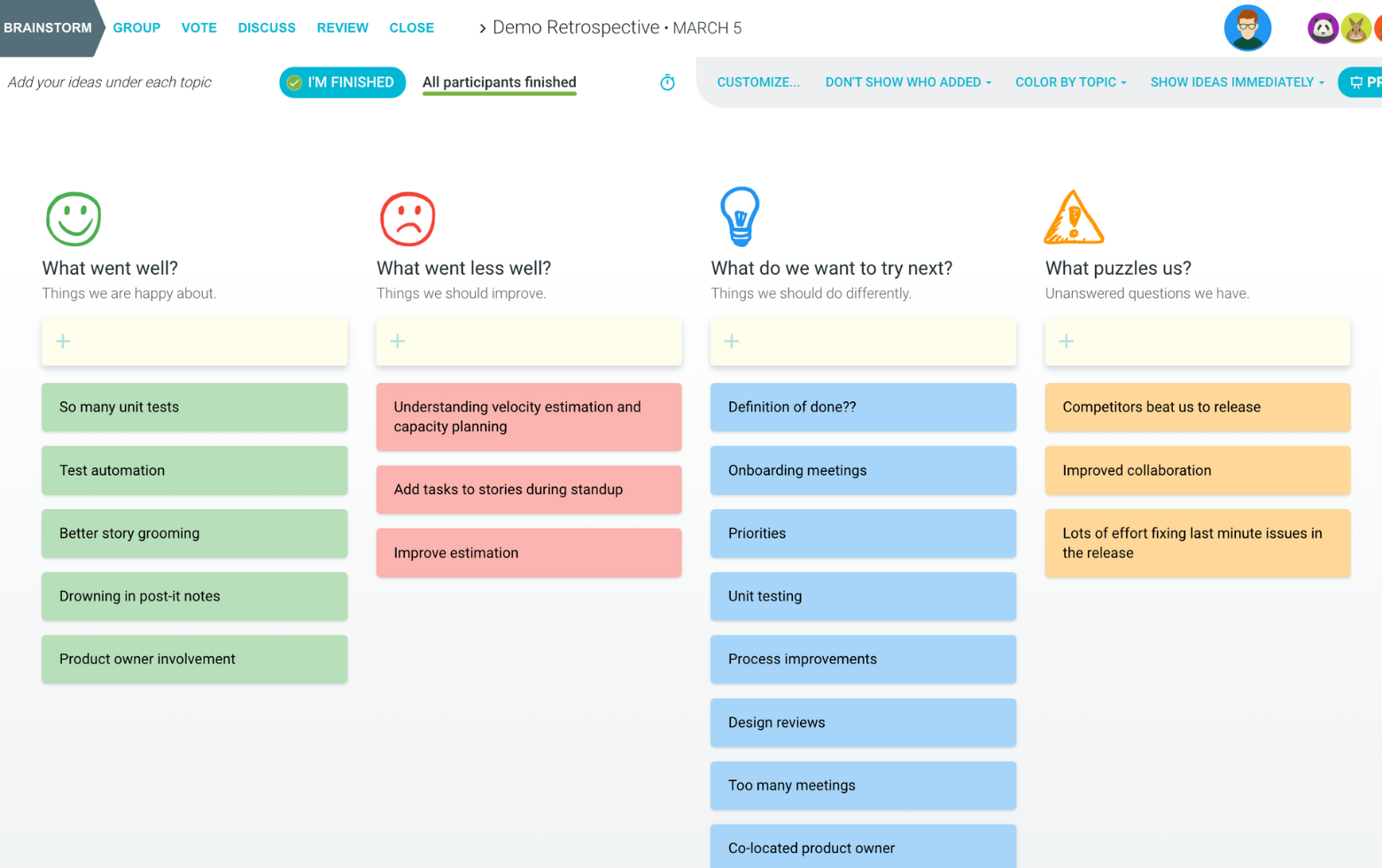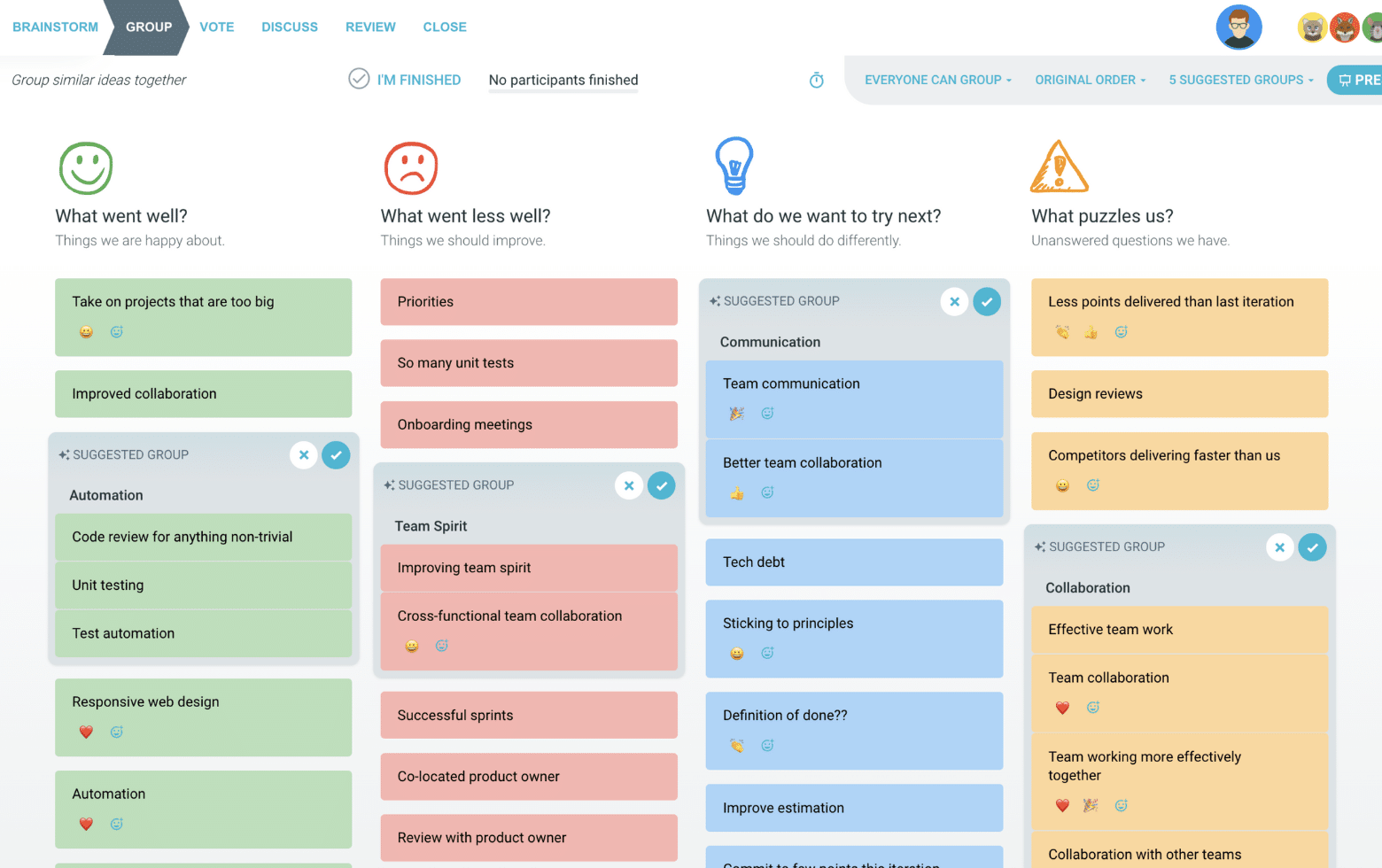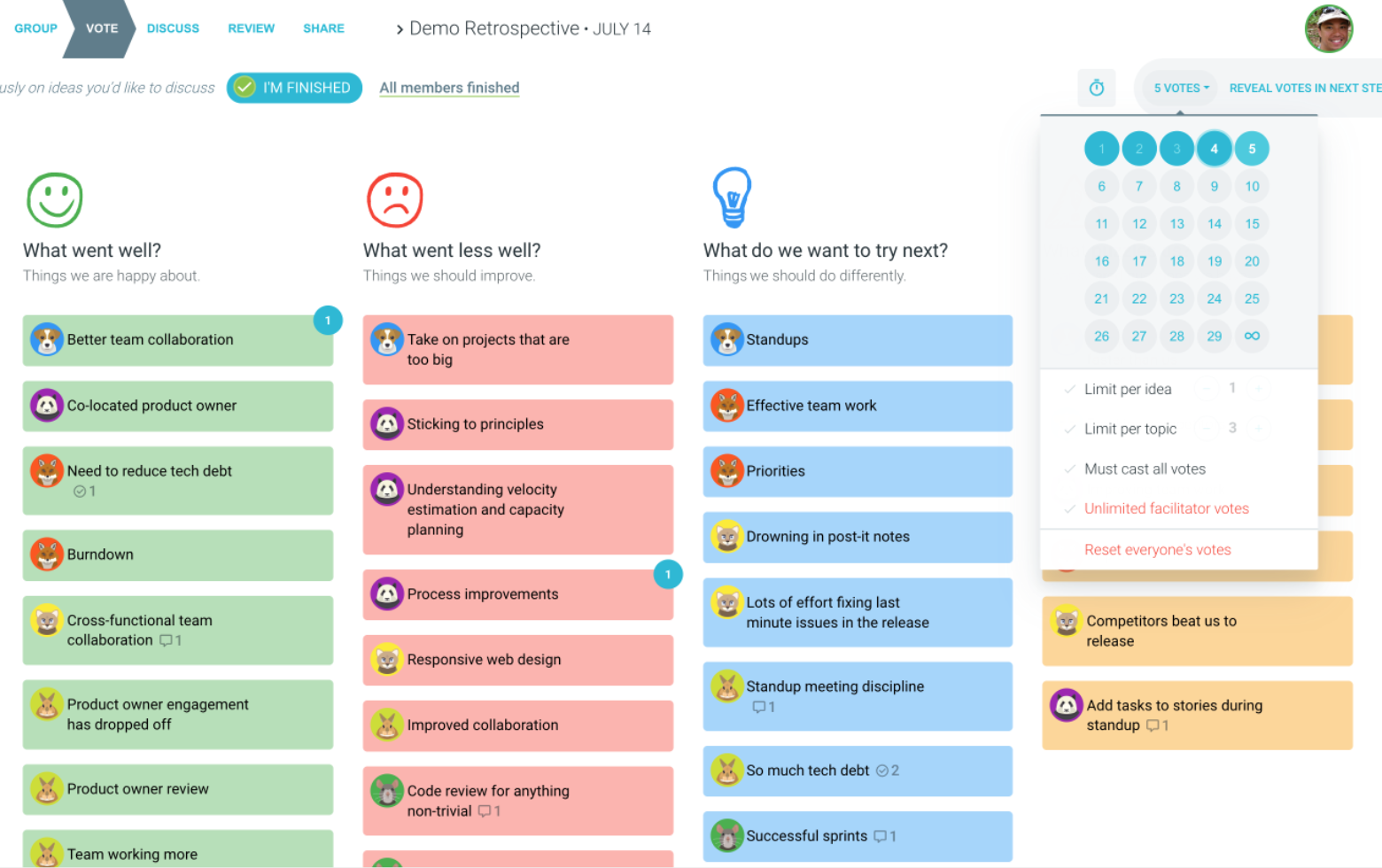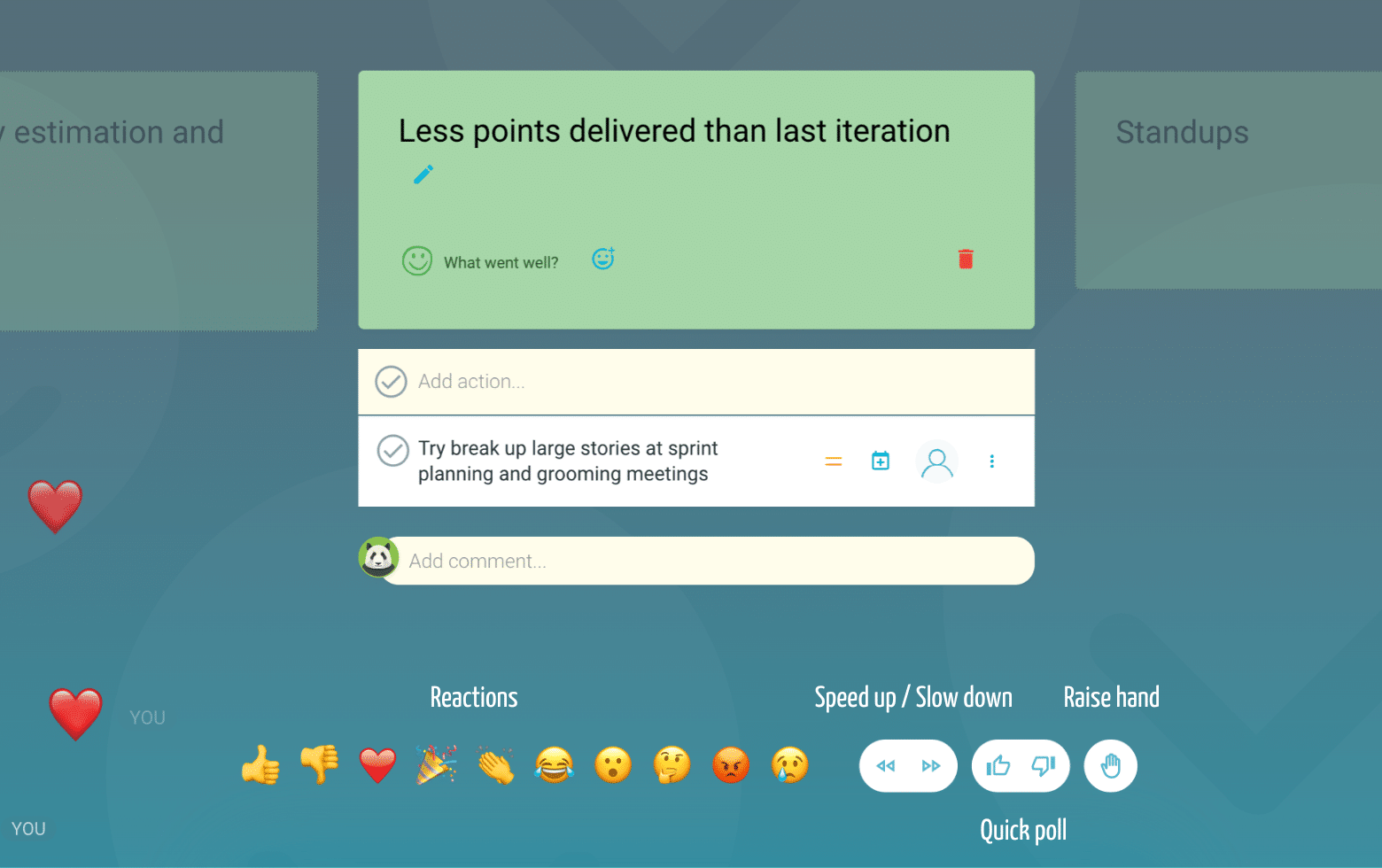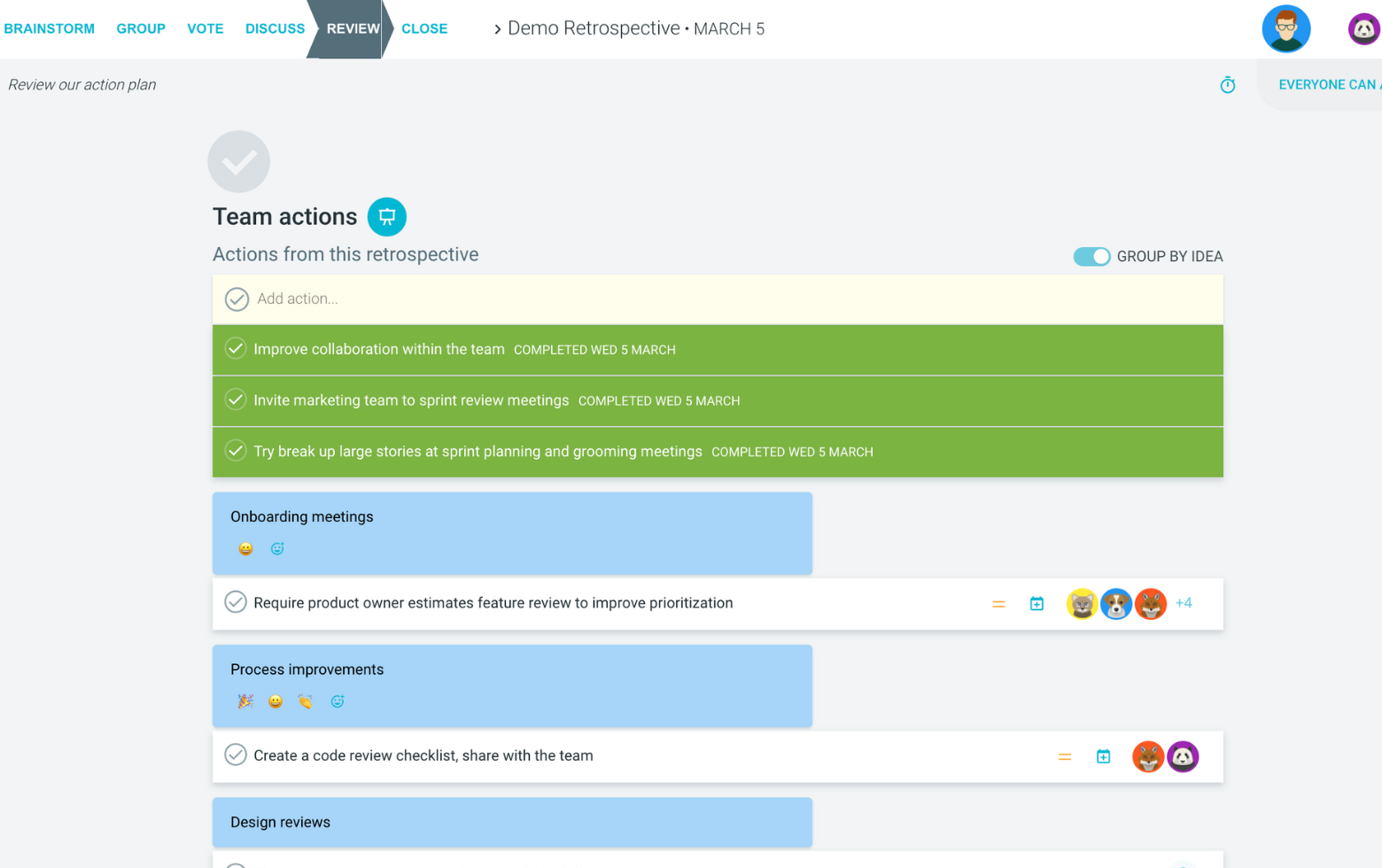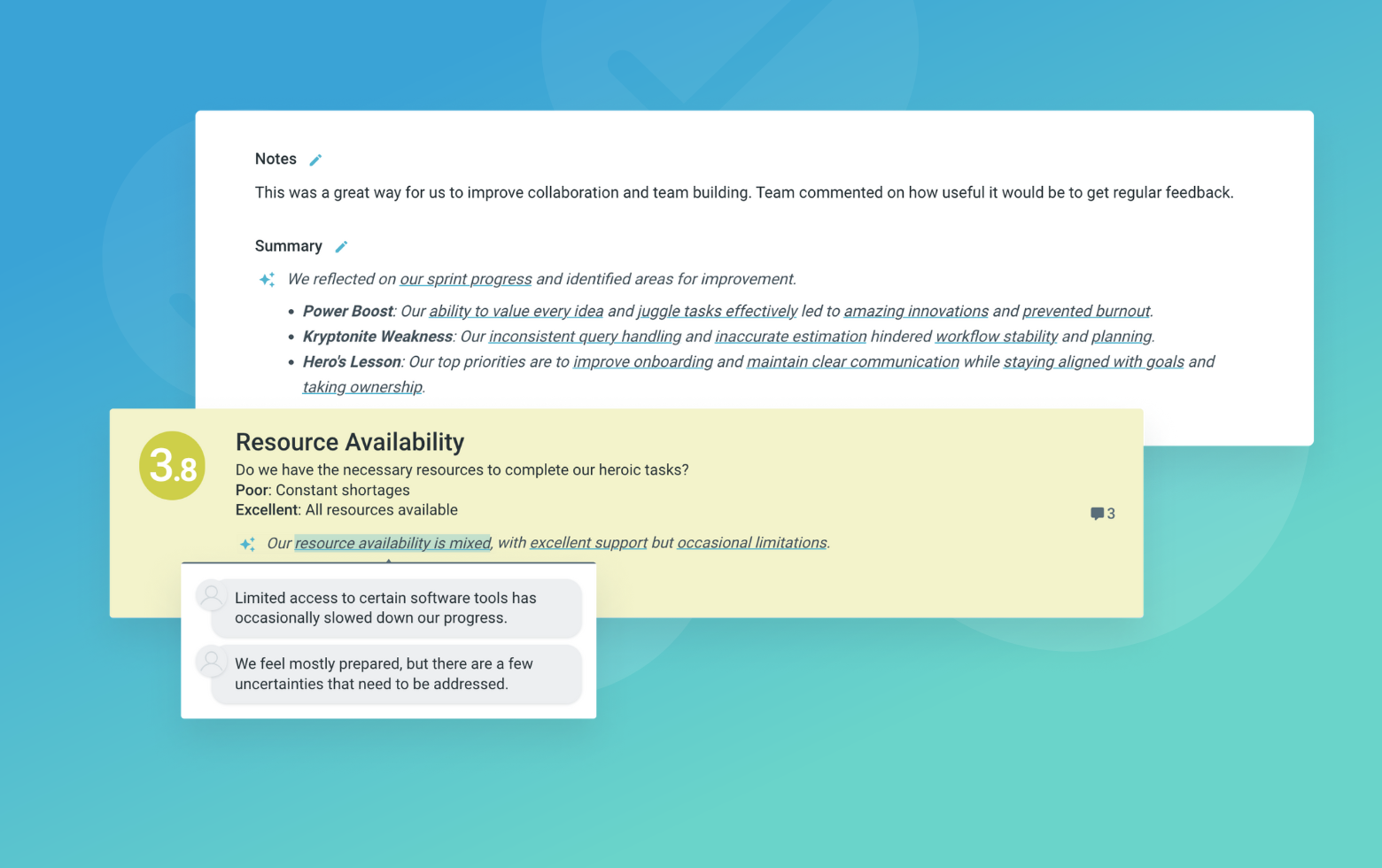The SWOT Analysis is a powerful strategic planning tool that helps teams systematically evaluate their Strengths, Weaknesses, Opportunities, and Threats. Developed in the 1960s by Albert Humphrey at Stanford Research Institute, this structured approach enables teams to take a comprehensive look at both internal and external factors affecting their performance.
During a SWOT retrospective, teams collaboratively identify their internal strengths and weaknesses, while also exploring external opportunities and threats. This balanced perspective helps teams leverage their advantages, address limitations, seize opportunities, and prepare for potential challenges.
The framework's simplicity and effectiveness make it particularly valuable for strategic planning, project kickoffs, and periodic team assessments. By examining all four dimensions, teams can develop actionable strategies that build on their strengths while protecting against vulnerabilities.
What is The SWOT Analysis
Strengths
Guide the team to identify internal positive attributes and resources that give the team an advantage. Focus on tangible and intangible assets, skills, and capabilities that are working well.
Weaknesses
Encourage honest discussion about internal limitations or areas where improvement is needed. Create a safe space for team members to share concerns without fear of judgment.
Opportunities
Help the team identify external conditions or potential changes that could benefit the team. Look for trends, market changes, or new technologies that could be leveraged.
Threats
Guide discussion toward external challenges or risks that could hinder success. Focus on identifying both immediate and potential future threats to prepare mitigation strategies.
Suggested icebreaker questions
- What's one thing our team does better than any other team you've worked with?
- If you could instantly master one new skill that would benefit the team, what would it be?
Ideas and tips for your retrospective meeting
- Start with strengths to build positive momentum and confidence in the team
- Encourage specific, actionable items rather than vague statements
- Consider both short-term and long-term perspectives when identifying opportunities and threats
- Focus on facts and evidence rather than assumptions
- Ensure all team members contribute to avoid bias toward certain perspectives
- Create action items to address weaknesses and threats while leveraging strengths and opportunities
.
How to run effective meetings with TeamRetro
Start Your Session in a Click
Log into TeamRetro and choose your template. Customise questions and the workflow to create your perfect retro for your team.
Create Your Team Easily – No Separate Accounts Needed
Brainstorm Individually – Free From Bias
Smart Grouping for Faster Insights
Fair, Flexible, and Fast Voting
Engage, React, and Capture Key Insights
Walk your team through ideas one by one with Presentation Mode. Stay in sync, spark real-time discussions, and capture feedback with comments, live reactions, and polls—all in one place.
Turn Ideas Into Action
Propose next steps with team buy-in, get AI-powered action suggestions, and keep everything in one place. Committed actions sync to your personal dashboard and integrate with your workflow tools—keeping you on track.
Save, Share, and Stay on Track
Get quick AI-powered summaries, add facilitator notes, and store retrospectives in your library for easy access. Schedule your next session and track published actions to keep your team accountable at the next retro.
Turn Team Data into Actionable Insights
Uncover trends, common themes, and key engagement metrics at a glance. Track sentiment shifts, analyze conversations, and monitor completed actions to drive continuous improvement.
